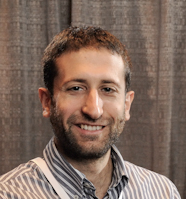Video replay
Youtube link
Bilibili link
Abstract
The ever-increasing demand for large-bandwidth communications and multi-purpose electronic services has radically affected the common meaning of telecommunication infrastructures, thus driving the evolution of data centers (DC) architectures toward the boundaries of modern technological solutions. Machines in a data center are usually placed on a tray placed in a rack, to enable ease of access, maintenance, efficient cooling, energy saving and server performances. It is often desirable to increase the density of machines in a rack to achieve optimal cost, while balancing the higher density with power, thermal and electromagnetic (EM) noise management. The radiation from a rack depends on its tray composition, layout and functionality (server, GPU, storage), combination of different tray topologies, working frequencies, thus its prediction is challenging and expensive. A predictive approach that combines the main possible radiation scenarios would be able to overcome complex and expensive EMC measurements for each tray assembly by approximating the radiation from a server rack starting from the knowledge of the radiation from single trays. Each single tray is assumed to be a stand-alone source and characterized by its radiated emissions measured in a semi-anechoic chamber. Once the radiation from each different source is known (or from the same source after applying different settings such as bit rate, load percentage etc…), the combined field radiated by all sources can be calculated applying the Spherical Wave Expansion (SWE) technique. The proposed method combines the SWE coefficients of each tray by following the tray stacking order for an approximate prediction of the radiated near field from the entire rack. The reconstructed radiated field is compared to the field directly radiated by all sources simultaneously activated. The method is demonstrated to be effective based on full-wave simulations and different tray scenarios. Some relevant aspects are discussed concerning the application of the proposed method to a real measurement setup.
About the speaker
Francesco de Paulis (S’ 08, M’ 13, SM’ 20) was born in L’Aquila, Italy in 1981. He received the Specialist degree (summa cum laude) in Electronic Engineering from University of L’Aquila, L’Aquila, Italy, in 2006. In August 2006 he joined the EMC Laboratory at the Missouri University of Science and Technology (formerly University of Missouri-Rolla), USA, where he received the M.S. degree in Electrical Engineering in May 2008. He received the PhD degree in Electrical and Information Engineering in 2012 from the University of L’Aquila, L’Aquila, Italy.
He was involved in the research activities at the UAq EMC Laboratory from August 2004 to August 2006, L’Aquila, Italy and at the MST EMC Laboratory from August 2006 to May 2008, Rolla MO, USA. From June 2004 to June 2005 he had an internship at Selex Communications, L’Aquila (now Leonardo s.p.a.), within the layout/SI/PI design group. He is currently a Researcher at the UAq EMC Laboratory, University of L’Aquila, Italy. His main research interests are in SI/PI design on PCB, packages interposers and chips, analysis and characterization of composite materials for shielding and absorption, RF interference in mixed-signal system, TSVs in silicon chips and interposers, EMI problem investigation, EMC measurements based on NF-FF transformation techniques, remote fault detection in transmission lines, design of T/R modules and electronic systems for space applications.
Dr. de Paulis received from the IEEE EMC Society the Past President’s Memorial Award in 2010. He was the recipient of the Best Paper Award in 2010, 2013 and 2016, and the Best Student Paper Award in 2009 and in 2011 at the IEEE International Symposium on EMC. He received the Paper Award in the power and RF design category in 2010, 2011, and 2012 at the IEC DesignCon. He was selected as Distinguished Reviewer of the Transaction on EMC for the years 2014 and 2016. He received the Honorable Mention for the Best Paper Award of the Transaction on EMC in 2014. He served as Associate Editor of the IEEE Transaction on EMC for a 2-year term (January 2017-March 2019).
Contact
[email protected]

